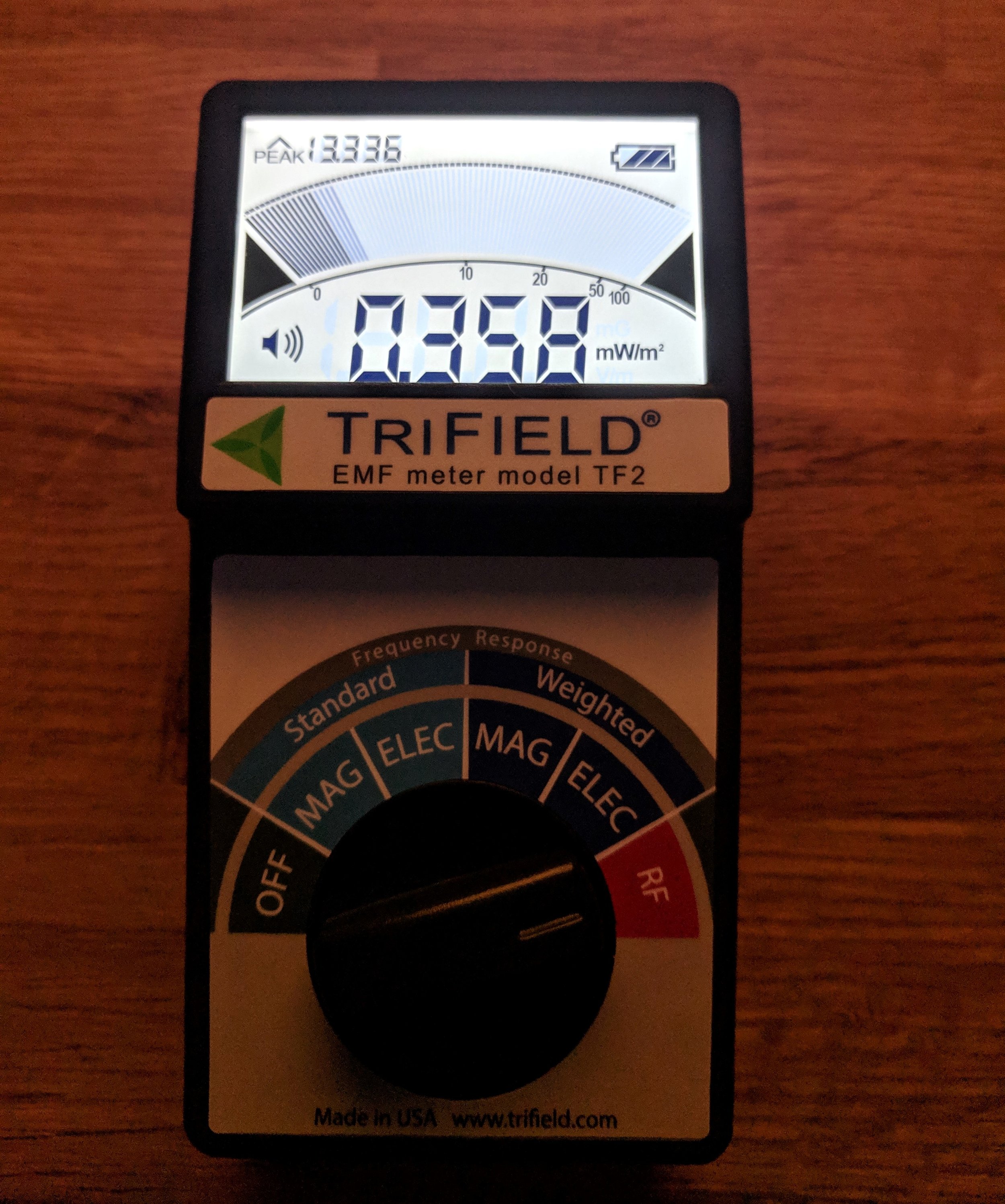TriField TF2 Meter
We’ve recently been testing TriFields new EMF meter, the TF2, and we’ve been pleasantly surprised at the simple yet effective functionality.
The TF2 is TriFields more recent EMF meter after their very successful first meter (TriField 100XE) which was praised by many. We’ve found the TF2 to be an excellent upgrade that combines all the features needed for fast and easy to understand measurements of electromagnetic fields. An ideal starter meter for those who want to get a good idea of any particularly bad sources of non-ionising radiation in their homes. So what sort of things can you measure? Here’s some examples:
Mobile Phones, Tablets, Smart Meters, WiFi, Bluetooth, Powerlines, Laptop and desktop computer, TV, Home Appliance such as refrigerators and dirty electricity from cabling - Basically, your radiation culprits are covered!
Design
The TF2 fits nicely in the hand and weighs 0.51 lbs making it easy to use out and about or in the house. It takes a 9V alkaline battery (included) and has a battery life of > 20 hrs with the backlight off and backlight on of > 12 hrs. The back-lit screen is a real stand out feature which makes makes it perfect for doing tests in the dark or low light. The screen gives both a current reading and a peak reading, making it much simpler to understand how much radiation is being emitted and the addition of the audio indicator allows you to better identify the source. Both the light and sound buttons can be found on the inside; slide off the battery cover to get to these. The new dial on the front allows you to switch quickly between electric, magnetic and radio frequencies.
Backlight on
Backlight off
Stats
AC Magnetic Mode / AC Electric Mode
Frequency range 40Hz – 100KHz (Mag) / Frequency Range: 40 Hz – 100 KHz (Elec)
Accuracy: ±4% @ 50/60 Hz (Mag) / Accuracy: ±5% @ 50/60 Hz (Elec)
Maximum Range: 100.0 mG (Mag) / Maximum Range: 1000 V/m (Elec)
Resolution: 0.1 mG (Mag) / Resolution: 1 V/m (Elec)
3 – axis (Mag) / 1-axis (Elec)
Radio Frequency Mode
Frequency Range: 20 MHz – 6 GHz
Accuracy: ±20% @ 1 GHz
Maximum Range: 19.999 mW/m2
Resolution: 0.001 mW/m2
1 – axis
Using the meter
You can start using the meter straight out the box, just pop the battery in and you’re ready to go. Hold the meter near to the source you’re investigating or in the area you desire and make sure that you don’t block any of the EMF sensors at the top of the meter. Turn the black knob to the desired EMF selection. Give the meter a few second to adjust and then check the screen for the reading.
The weighted mode is more sensitive to anything above 60Hz and is the best option for any conductive body. For direct measurement of field strength, use the light blue standard mode.
If you are measuring radio frequency radiation from your smart meter or WiFi, turn the dial to the RF settings (radio frequency). The important measurement here is the peak value as most RF radiation comes in the form of packets of information or digital bursts (GSM, LTE, WPA2 etc).
The units of measurement will change depending on what you are measuring. So If you are measuring magnetic fields, it will be in milliGauss (mG). If you are measuring electric fields, it will be in Volts per meter (V/m) and If you are measuring radio frequency or microwave radiation, it will be in milliWatts per square meter (mW/m²).
Recommended EMF Limits
TriField suggest that areas where you spend a lot of time in (such as the bedroom) you should aim for the following: magnetic field less than 5.0 mG, electric field less than 20 V/m and RF less than 5.000. However, we would suggest generally keeping these these figures even lower in the places like the bedroom. Less is always better and distance is always your friend!
Overall
This is an easy meter to pick up and get going straight away without much knowledge of EMFs. You’ll be able to quickly identify any sources of radiation across the spectrum of frequencies. We would recommend this meter to anyone who is starting to investigate EMFs in their homes. It’s also a handy meter for those on the go who want to keep track of their exposure in different places. That being said, if you want more sensitive readings for very low frequencies, you’ll have to purchase a more sensitive meter. Overall, we give the TF2 two big thumbs up because of its range of use and very competitive price. You would be hard pressed to find a better meter in this range.
EMF Home Team



